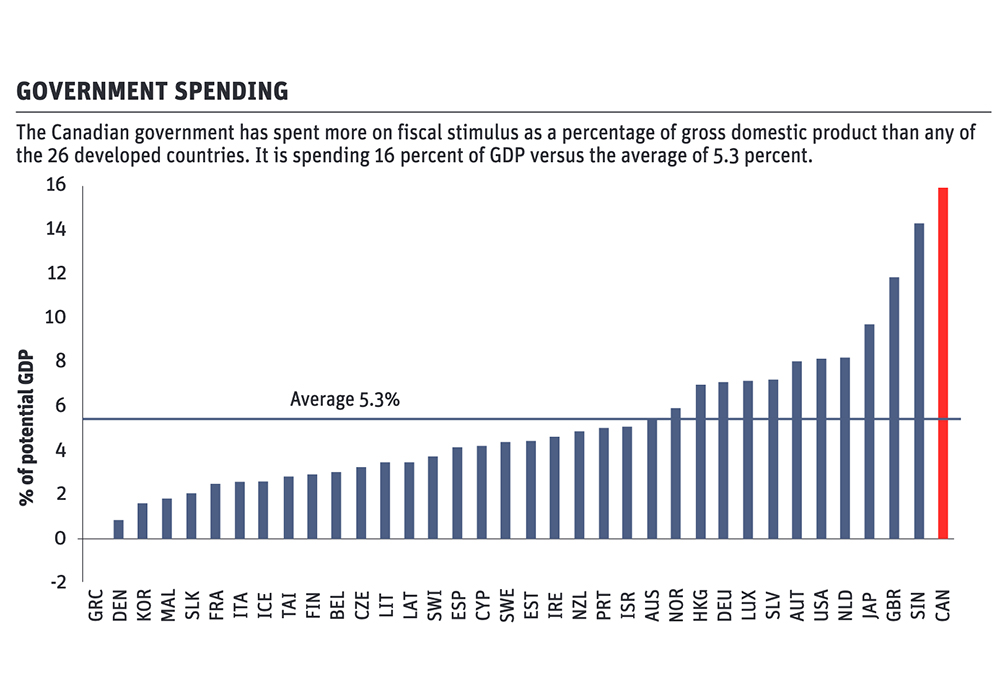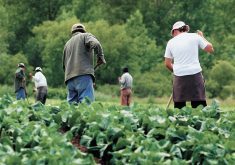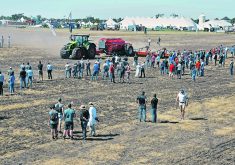Canada has bounced back from the COVID-related downturn quicker than what is normally seen after a recession
Canada has rebounded from an historic but short-lived COVID recession, says a banker.
Canada’s gross domestic product plunged 18 percent in April from its peak in February, making it the worst recession in modern history, said Patrick Lemelin, vice-president of agriculture at National Bank.
During a typical recession, gross domestic product may fall in the range of three to five percent and it takes 10 to 18 months to recover from that drop.
This recovery has been extremely rapid. By August, GDP was down only 4.6 percent from its February peak.
Read Also

Why feds imposed EV tariffs
Moe and Kinew have a fight on their hands when it comes to eliminating the EV tariff. Canada has to worry about pissing off the U.S. and Mexico and hundreds of thousands of auto workers.
National Bank is forecasting four to five percent economic growth in 2021, which is astounding.
The quick turnaround is attributed to “generous” spending by the federal government. It has been the largest fiscal stimulus in modern history.
Canada will spend 16 percent of its estimated 2020 GDP attempting to stimulate the economy, more than any other of the world’s 26 developed countries. The average expenditure is 5.3 percent.
Canada’s spending spree has come at a steep cost on the debt side of the ledger.
“Going back to the beginning of the confederation we have never seen a deficit of this magnitude, outside of a global armed conflict,” Lemelin told delegates attending the Agricultural Excellence Conference.
Canadians suffered a huge reduction in employment income during the early stages of COVID-19.
That has been more than offset by government transfers.
In fact, Canadians have seen the biggest increase in disposable income in history at the same time they experienced the biggest loss in employment income.
Lemelin said that is a highly unusual juxtaposition.
Households have been unable to spend all the extra cash and that has resulted in the biggest savings level in 75 years.
Bankers across Canada are watching in amazement as operating loans are paid down and savings accounts are built up.
“It’s quite unusual,” he said.
The good news is that while Canada’s net debt is likely to double to about 60 percent of GDP by the end of the pandemic, that will still be less than half as much as the average of the G7 countries.
“We’re still in good shape,” said Lemelin.
With all the extra money in the system there has been a V-shaped recovery in retail sales, with sales in the third quarter of 2020 higher than pre-pandemic levels.
The U.S. has experienced a similarly rapid recovery in retail sales.
World trade volumes have fully recovered within a few months. It took two and a half years for that to happen during the global economic meltdown of 2008.
Stock markets have bounced back within six months. The last two recessions it took six to seven years for that to occur.
The rebound in stock values is due to government organizations such as the U.S. Federal Reserve and the Bank of Canada buying up corporate and government bonds.
Lemelin believes interest rates will stay low in 2021 and even in 2022 because governments want to maintain an environment where businesses can recover their losses.
That is good news for farmers, who tend to carry high debt levels.
The Canadian dollar lost a lot of ground during the crisis, hitting a low of around 69 cents U.S. It has since rebounded to about 77 cents.
National Bank believes it will continue to climb and hover around 80 to 81 cents in 2021.
“That’s kind of bad news for the agricultural commodities,” he said.
In general, agriculture has fared far better than other sectors of the economy. When total GDP plummeted by 18 percent in April, agriculture experienced a slight increase of 0.4 percent.
Lemelin expects that 2020 farm income will be average to a bit above average.
Basic agriculture, such as the grain, livestock and dairy sectors, fared better than agrifood businesses like the packing and food processing industries.

















